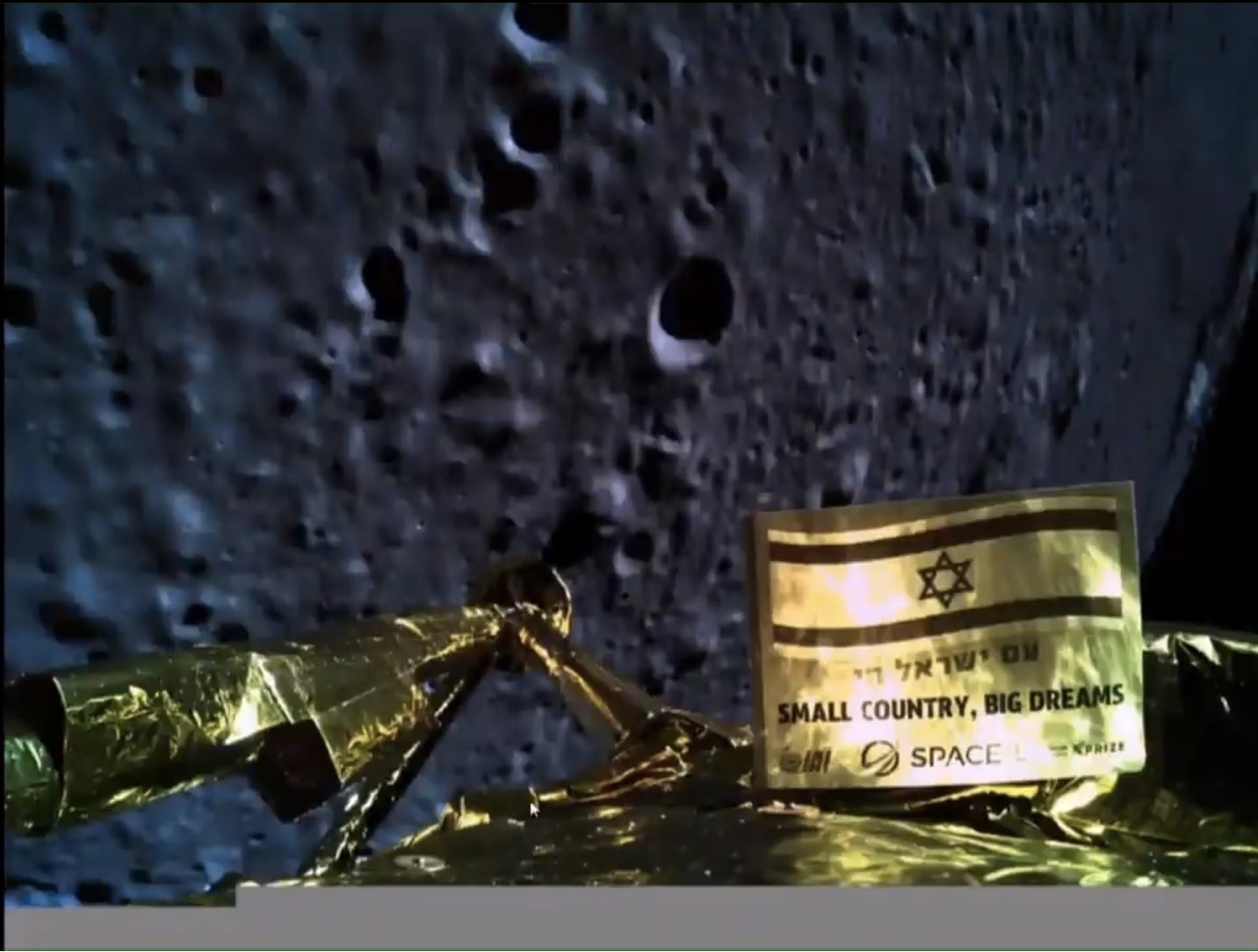Space Is Hard, Beresheet Israeli Lunar Crash Proves Again
An unassuming spacecraft called Beresheet shot for the moon on April 11. It couldn't quite stick the landing, but it has plenty of company in its disappointing fate.
Beresheet, an Israeli mission launched by a partnership between nonprofit SpaceIL and government-owned aerospace company Israel Aerospace Industries, sent back its last photograph during its descent to the lunar surface. But just a few minutes later, mission control lost contact with the spacecraft, eventually concluding that the probe had crashed instead of slowing rapidly enough to execute the planned soft landing.
But even at mission control, onlookers were philosophical about the mission's tough end. "If at first you don't succeed, you try again," Israeli Prime Minister Benjamin Netanyahu, who watched Beresheet's landing attempt from SpaceIL's control center in Yehud, Israel, said during the mission's live broadcast of the maneuver.
Related: Israel's Beresheet Spacecraft Crashes into Moon During Landing Attempt
In Hebrew comments also made during the broadcast, Netanyahu expressed interest in building a second lander and making another attempt at the tricky feat of landing gently on another planetary body, tossing out a timeline of two or three years.
On Saturday (April 13), Morris Kahn, the billionaire businessman, pilanthropist and SpaceIL president, confirmed that the SpaceIL team is meeting this weekend to begin planning the Beresheet 2.0 mission.
"We're going to actually build a new halalit — a new spacecraft," Kahn said in a video statement posted on Twitter by SpaceIL. "We're going to put it on the moon, and we're going to complete the mission."
Get the Space.com Newsletter
Breaking space news, the latest updates on rocket launches, skywatching events and more!
The team behind Beresheet knew all along that the mission's design included risks. In order to keep the spacecraft small enough to piggyback with another spacecraft on a Falcon 9 rocket, the engineering team had to design the craft without any backup systems. Nevertheless, before its ultimate failure, the spacecraft withstood multiple glitches while in Earth orbit and during the early stages of landing.
Beresheet's attempted landing made a splash beyond Israel as well. The lander had carried a science instrument provided by NASA, a retroreflector instrument scientists would have used to make precise measurements of the distance between Earth and the moon.

And although that instrument is no more, NASA's chief also expressed hope for the future of Israeli spaceflight. "Every attempt to reach new milestones holds opportunities for us to learn, adjust and progress," NASA Administrator Jim Bridenstine wrote in a statement. "I have no doubt that Israel and SpaceIL will continue to explore, and I look forward to celebrating their future achievements."
That's not a surprising response; NASA knows as well as anyone just how difficult spaceflight can be. The moon's surface is littered with dozens of expired spacecraft, and although many ended their missions smoothly, several made unplanned crash landings, including NASA's own Surveyor 2 and 4 missions during the 1960s. More recently, all the agency's lunar crashes have been purposeful, but landing on the surface of another world is never something to get cocky about.
"Space is hard, but worth the risks," Thomas Zurbuchen, associate administrator for NASA's Science Mission Directorate, wrote on Twitter after the landing attempt. "If we succeeded every time, there would be no reward. … We're looking forward to future opportunities to explore the moon together." He also said that he would be visiting Israel later this year to talk about those opportunities.
Space is hard, but worth the risks. If we succeeded every time, there would be no reward. It’s when we keep trying that we inspire others and achieve greatness. Thank you for inspiring us @TeamSpaceIL. We’re looking forward to future opportunities to explore the Moon together. pic.twitter.com/yZ35IJKOYCApril 11, 2019
Zurbuchen has been in the shoes of the anxious mission staff watching the landing attempt unfold. Most recently, he sat in mission control at NASA's Jet Propulsion Laboratory in California as the Mars InSight lander touched down in a maneuver billed as "6 minutes of terror."
"I want to thank @TeamSpaceIL for doing this landing with millions watching around the world, despite knowing the risks," Zurbuchen wrote on Twitter. "We do the same because we believe in the value of worldwide exploration and inspiration. We encourage all international and commercial explorers to do the same!"
Live Science staff writer Rafi Letzter contributed to this report.
- Israel's 1st Moon Lander: The SpaceIL Beresheet Lunar Mission in Pictures
- Moon: Space Programs' Dumping Ground (Infographic)
- The Greatest Moon Crashes of All Time
Email Meghan Bartels at mbartels@space.com or follow her @meghanbartels. Follow us on Twitter @Spacedotcom and on Facebook.
Join our Space Forums to keep talking space on the latest missions, night sky and more! And if you have a news tip, correction or comment, let us know at: community@space.com.

Meghan is a senior writer at Space.com and has more than five years' experience as a science journalist based in New York City. She joined Space.com in July 2018, with previous writing published in outlets including Newsweek and Audubon. Meghan earned an MA in science journalism from New York University and a BA in classics from Georgetown University, and in her free time she enjoys reading and visiting museums. Follow her on Twitter at @meghanbartels.









